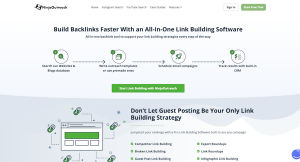 When you start a blog, you expect it to be quite successful, don’t you? You know who your target audience is and what blog posts you’d like to write. But things are a bit more complicated: Blogging is not only about writing.
When you start a blog, you expect it to be quite successful, don’t you? You know who your target audience is and what blog posts you’d like to write. But things are a bit more complicated: Blogging is not only about writing.
You’ll obviously need to learn how to create useful and interesting content with photos or infographics, get to know some SEO essentials, find out how to check whether anybody steals your precious content, promote your blog, and more.
The following shortlist is created to help you blog effectively.
- Create a Content Marketing Plan First
Everything starts with a plan. If you devote a few hours a day to brainstorming, you’ll save much time in the course of your work. Even the roughest draft is a good plan. You can develop it as you go forward.
Carry out a kind of research to learn what topics are the most popular with your audience. Make a list of those you’d like to cover, choose different types of articles (life hacks, guides, success stories, expert interviews, etc.), so that your content won’t look monotonous. Schedule posts, and decide how much time you can devote to writing. Sign up for content marketing sites to pick up new ideas for your content and the blog itself.
- Monitor Competitors’ Websites
In order to get more ideas and see which types of posts work better with your audience, look through the blogs of your potential competitors. They are not your enemies. Thanks to their experience you can learn something truly useful.
Also, it’s a good idea to find a number of influential bloggers you can follow not to copy them, of course, but to learn from their good example.
- Keep an Eye on Users’ Comments
Comments from both your readers and the readers of your competitors are the best indicators of any audience’s needs or interests. They might encourage you to outline some new topics, share experience and recommend new solutions of their problems.
- Check SEO Parameters of Your Competitors’ Sites
To know what steps to take next to promote your blog, you’ll need to monitor its SEO parameters. To understand how successful your competitors are, you can also easily define their SEO ranking position. For that you can use HypeStat and SEM Rush. These two services can provide you with detailed stats on unique visitors you have, average daily attendance of your blog, etc.
Keywords do matter much for any blog. Google AdWords can help you a lot with choosing the most suitable ones for your posts. Though you shouldn’t overuse them. Google as well as other search engines check for “keyword stuffing” and punish these sites by removing from search index.
- Decide How You’re Going to Advertise Your Blog
For example, if you build a blog on WordPress.com, you’ll definitely find myriads of the plugins to use. Some of them allow you to add share buttons to post your entries on social media resources. And as you know, social media is a really powerful tool to promote any product including blog content.
- Use Plagiarism Checkers
Have you ever come across any web content that is no longer accessible? Sometimes this happens when the content has been lifted from other sites. In this case, plagiarists are likely to receive takedown notices urging them to remove stolen content otherwise their websites would be banned. And this is not the only problem awaiting those fond of stealing. There’s a well-known Panda filter, which can also hinder websites with low quality content from being ranked high.
If you become a plagiarism victim, you can also refer to Google to submit a copyright infringement request.
In addition, you might use plagiarism checkers like Unplag, Plagscan, Copyscape and other document plagiarism checkers to scan your texts for similarities and avoid eventual duplication. The tool also provides detailed plagiarism report with highlighted non-unique text parts and a list of duplicated sources, which you can email straight from your account to multiple content thieves. By the way, these reports can be further used as an additional evidence proving that you’ve become a victim of content theft.
- Create a Magnetic Content
The key point here is to make your posts as easy to understand as possible, so that your readers won’t get bored with them.
Pay attention to the readability of your posts. Use visually appealing background and font. Shape text body of each post as a column. Break your writing into paragraphs of different length (one paragraph should contain 5 lines maximum), create catchy subtitles, and insert numbered or bulleted lists. For more handy tools making your posts unique, click here.
Accompany your blog posts with pics and infographics. Make use of photo stock sites like Shutterstock or BootstrapBay. Use Canva to create a poster, album cover, and more. For infographics or other visualizations, you can take advantage of these web resources: Piktochart, Vizualize, Bootstrap Bay, Shutterstock, Easel.ly.
Just Another Short Notice to Remember
Another way to avoid making mistakes is to pay attention to the mistakes already made by someone else. This way your blog is going to be head and shoulders above other blogs.
(332)





